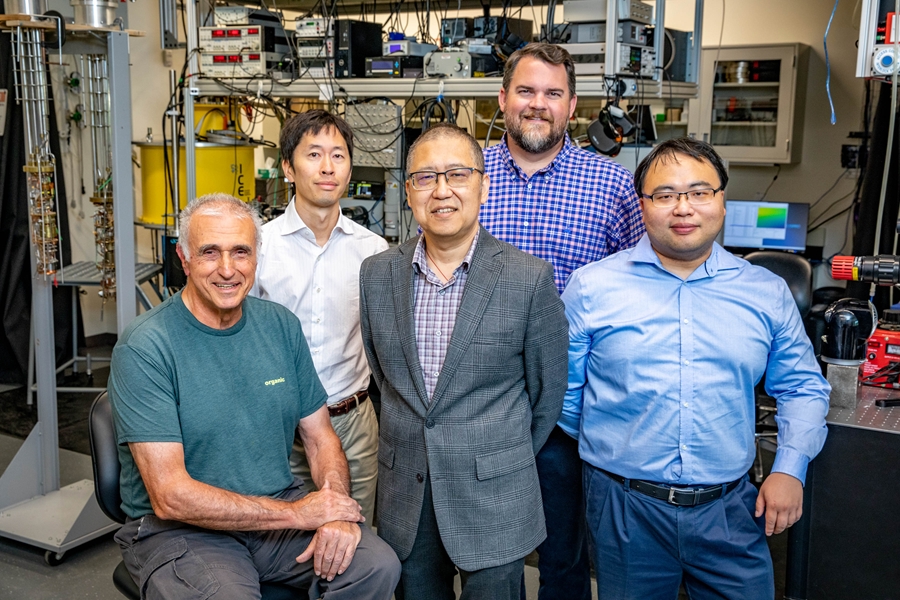
A team of researchers led by Shui-Qing “Fisher” Yu, electrical engineering professor at the U of A, will receive $10.35 million from the U.S. Department of Energy to establish an Energy Frontier Research Center.
The grant will establish the Center for Manipulation of Atomic Ordering for Manufacturing Semiconductors, the first Energy Frontier Research Center in Arkansas. The center will be dedicated to investigating the formation of atomic orders in semiconductor alloys and their effects on various physical properties.
This research program will enable reliable, cost-effective and transformative manufacturing of semiconductors, the essential material used in computers and other electric devices.
In addition to Yu, the team comprises four colleagues in the Department of Physics — Distinguished Professor Greg Salamo, assistant professor Jin Hu, associate professor Hugh Churchill and assistant professor Hiro Nakamura — and several researchers at other institutions.
The four-year grant is part of the Energy Department’s $540 million in research funding to universities and national laboratories focused on clean energy technologies. The ultimate goal is to create and develop low-carbon manufacturing processes that will reduce greenhouse-gas emissions.
The award is based on the multi-institutional team’s recent discovery that atoms in the alloy silicon germanium tin, a semiconducting material, demonstrate a short-range order in a periodic lattice. Short-range order refers to the regular and predictable arrangement of atoms over a short distance, usually only one or two atom spacings. This discovery had a significant effect on the energy band gap and led to the exciting hypothesis that material properties in semiconductor alloys could be designed and fabricated by manipulating the order of atoms.
“We particularly thank the institutional support from U of A, which played a critical role in proposal completion and will assist center operation,” Yu said.
The U of A will lead researchers from Arizona State University, George Washington University, Stanford University, University of California Berkeley, Dartmouth College, Rensselaer Polytechnic Institute, University of Arkansas Pine Bluff, University of Delaware and Sandia National Laboratory.
About the University of Arkansas: As Arkansas' flagship institution, the U of A provides an internationally competitive education in more than 200 academic programs. Founded in 1871, the U of A contributes more than $2.2 billion to Arkansas’ economy through the teaching of new knowledge and skills, entrepreneurship and job development, discovery through research and creative activity while also providing training for professional disciplines. The Carnegie Foundation classifies the U of A among the few U.S. colleges and universities with the highest level of research activity. U.S. News & World Report ranks the U of A among the top public universities in the nation. See how the U of A works to build a better world at Arkansas Research News.
Topics
Contacts
Shui-Qing "Fisher" Yu, professor of electrical engineering
College of Engineering
479-575-7265, syu@uark.edu
Matt McGowan, science and research communications officer
University Relations
479-575-4246,
dmcgowa@uark.edu